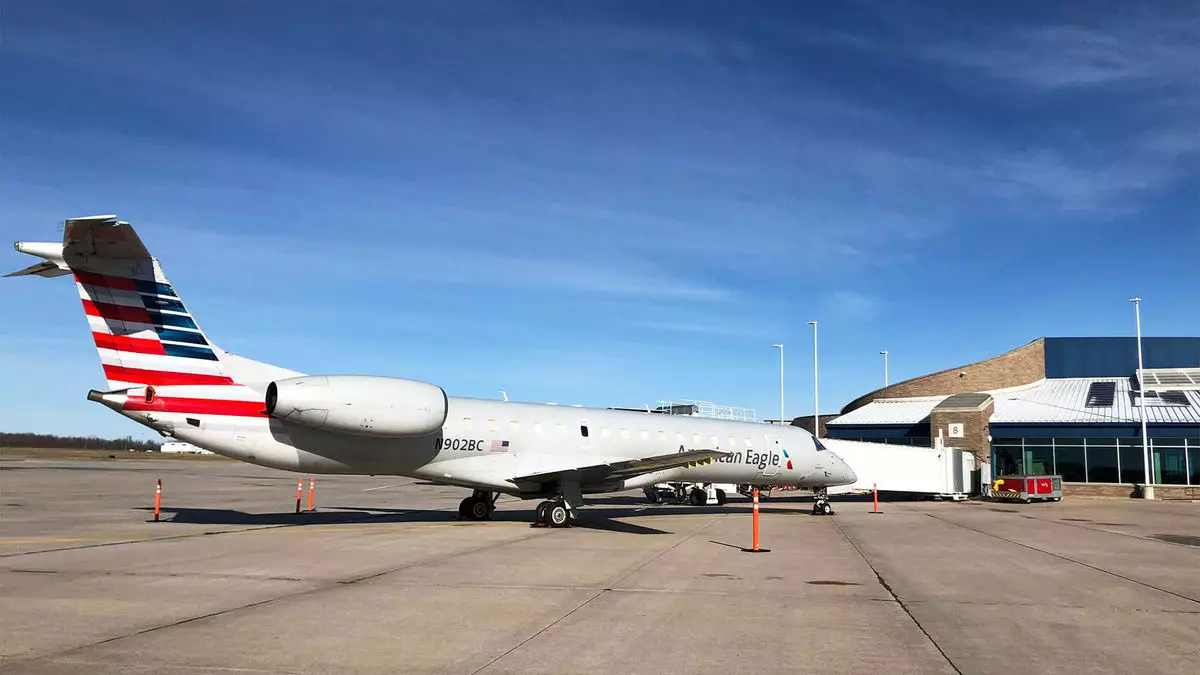In the wake of the COVID-19 pandemic, the aviation industry faced unprecedented challenges, with small airports like Appleton Airport in northeast Wisconsin grappling with significant declines in air service. Many major airlines, including American, Delta, and United, found themselves forced to ground regional aircraft amid a pronounced pilot shortage. However, a remarkable transformation occurred in June, marking a pivotal moment for the airport. With the launch of American Airlines’ service to Dallas-Fort Worth, Appleton Airport has charted a resurgence in air travel, highlighting the community’s resilience and adaptive spirit.
The reintroduction of service to major destinations isn’t just a fluke; it’s the result of careful planning and response to increased demand. Besides the Dallas-Fort Worth route, American has revitalized its service to Charlotte, further enhancing connectivity for the area’s residents. Delta and United have also stepped up, adding frequency to existing routes, which has been particularly beneficial for both business and leisure travelers. This uptick in service is crucial for a city that relies heavily on air travel for economic development and connectivity, especially given that Allegiant is the only competitor providing low-frequency flights.
Jesse Funk, the air service and business development manager at Appleton Airport, emphasizes the impact of these developments on the local community. Enhanced connections not only facilitate easier travel for business professionals but also enrich leisure options for families and tourists. This increased competition is a significant advantage, as it often leads to lower fares and more choices for passengers.
Appleton’s revival is part of a broader trend witnessed across small and medium-sized American cities. As airlines slowly recover from pilot shortages, there have been noticeable increases in regional flight availability. According to recent statistics, American Airlines has increased its regional aircraft flights by nearly 15%, with Delta and United following suit with impressive growth figures of 9.8% and 13.9%, respectively. This surge in regional flight operations signals a gradual return to pre-pandemic levels, much to the relief of countless communities dependent on air traffic.
Glen Hauenstein, Delta’s president, expressed optimism during their Q3 earnings call, indicating that the ongoing pilot shortage was beginning to ease. With the regional fleet achieving 70% of its pre-COVID operational capacity, analysts expect it could return to full capacity by the upcoming summer. United Airlines is also moving in this direction, having reached full utilization of its existing regional fleet, demonstrating a robust recovery strategy.
Despite the positive outlook, industry experts caution against complacency. An in-depth analysis shows that regional air travel still lags significantly behind pre-pandemic figures, with delays in the delivery of new regional aircraft further complicating the landscape. United CEO Scott Kirby’s remarks during a recent earnings call highlighted the airline’s intent to focus predominantly on mainline aircraft, indicating that while regional jets will remain a fixture, their significance could diminish in relation to overall operations.
The Regional Airline Association paints a sobering picture of the current landscape, noting that over 65% of U.S. airports have less air service than they did in October 2019, particularly affecting the smallest airports. With regional service remaining precarious, the potential for another pilot shortage looms on the horizon as the supply chain normalizes.
In the face of these challenges, Appleton Airport is not resting on its recent achievements. Funk’s forward-looking sentiment reflects a community that is not only satisfied with its current growth but is also actively pursuing more opportunities. The air service strategy extends beyond mere recovery; it emphasizes the need for sustained growth that aligns with the needs of the airport’s user community.
The recent advancements at Appleton Airport symbolize more than just a recovery from pandemic-induced hardships. They represent a deeper commitment to fostering connectivity for the local population while navigating the complex dynamics of the aviation industry. As Appleton continues to forge ahead in its air service endeavors, the community remains hopeful for a future marked by resilience, growth, and enhanced global connectivity.

